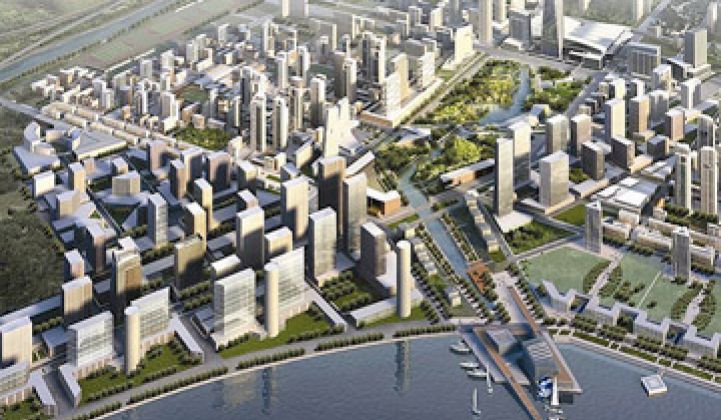Cities consume 75 percent of the world's energy and produce 85 percent of the world's greenhouse gases, according to Cisco's Marthin De Beer, speaking at the GigaOm GreenNet event in San Francisco, California on Thursday. And 500 million people are rapidly urbanizing according to De Beer.
How do cities stay green amidst the population's march towards urbanization?
De Beer provided the story of a Korean city, Songdo, outside of Seoul, as a case study. Songdo is laying claim to the title of "greenest city," as 75 percent of the residents are beginning to move in.
Cisco has partnered with the developer of the city to network the entire city with an eye towards reducing energy consumption and impact on the earth.
With the entire city networked and every home outfitted with telepresence technology in the TV -- people's lives change in subtle and not-so-subtle ways. Telepresence alters the way consumer services are delivered. Rather than drive to the DMV to interface with surly employees in person, you can interface with surly DMV employees in your living room. There is certainly an Orwellian aspect to this total connectiveness, depending on your level of paranoia and trust in government.
Still, the networked city influences energy use, water use, traffic, entertainment, health, and education.
De Beer sees the network as the "fourth utility" and the platform via which to "connect everything." He spoke of one trillion connected devices by 2020.
It's one thing to build a city from scratch; it's another thing to retrofit an existing city. De Beer noted that to make smart networks work in existing cities, you need global open standards, private-public partnerships and smart regulations.
De Beer gave an example of a retrofit project, Envision Charlotte, in Charlotte, North Carolina that has Cisco partnered with utility Duke Energy and the city to reduce building energy consumption by 20 percent.
The speaker also showed smart energy grid connectiveness applied to the workplace with energy-awareness created by digital signage. Cisco sees a mobile workforce within the building with mobile workspaces that shift to conserve energy, telecommuting, networked blinds, windows, and lights. This will require cultural as well as technological change.
Cisco is involved in 100 major city projects involving networks and smart grids.
De Beer is the SVP, TelePresence, Emerging Technologies and Consumer Business, at Cisco. According to De Beer, over the last five years Cisco has saved $800 million in travel because of telepresence and made productivity gains worth $350 million.



